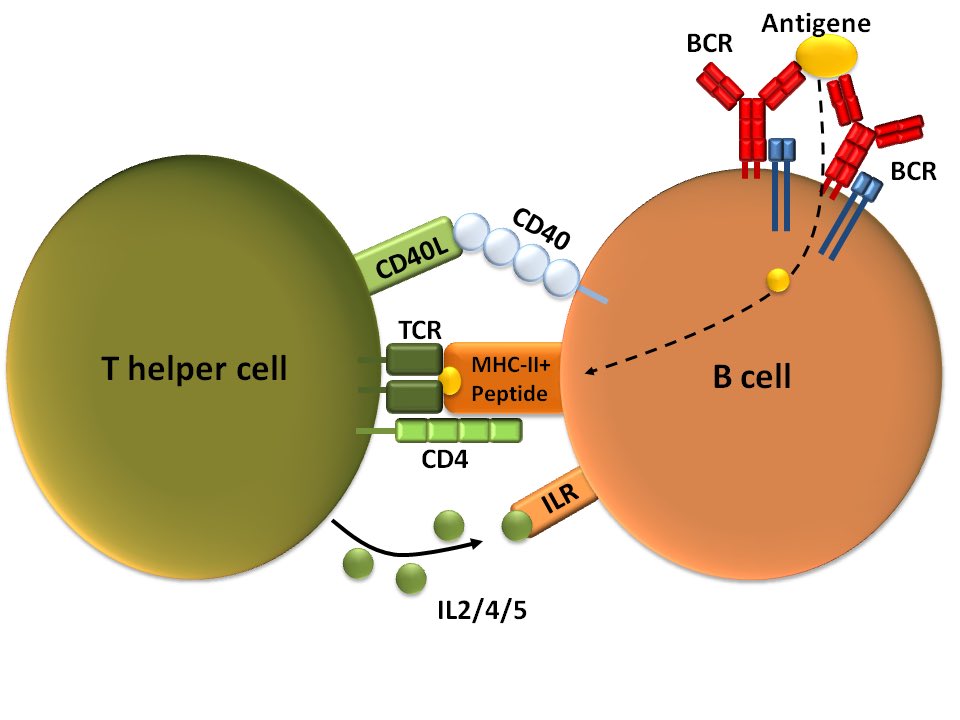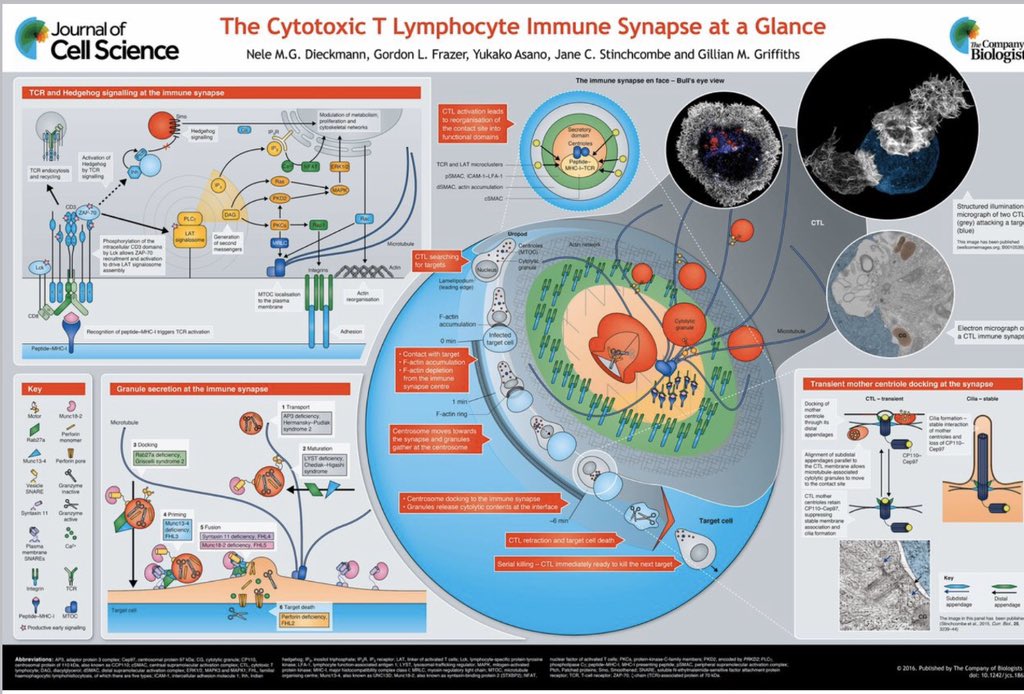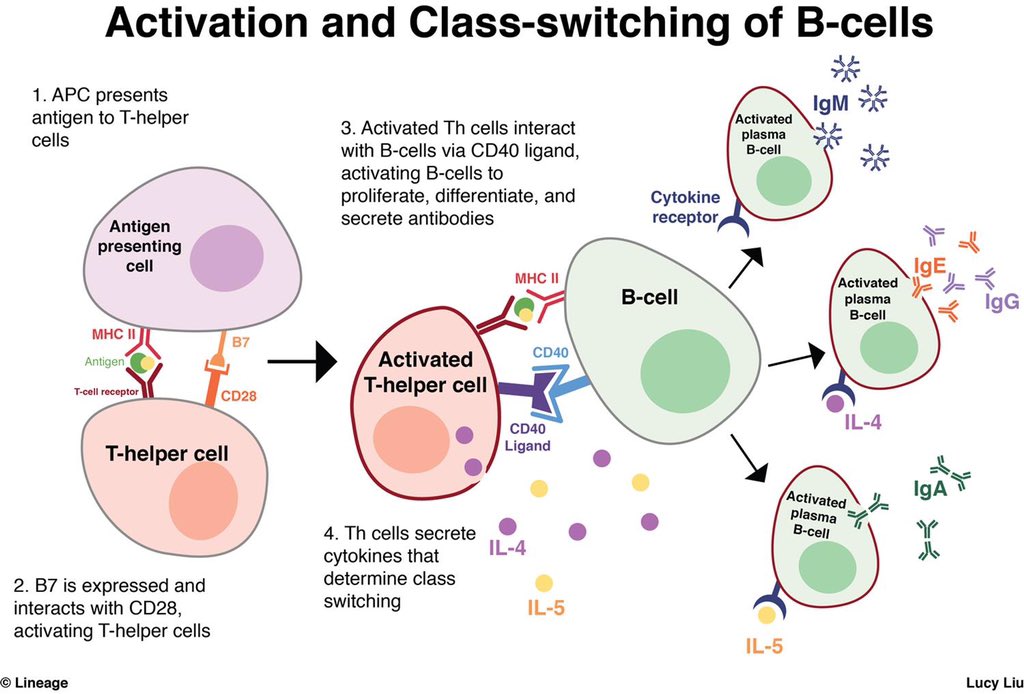
THREAD
“Most people who recover from COVID-19 develop immune memory that lasts for at least six to eight months, a NIAID-funded study suggests. The findings, published today in Science, are based on analysis of blood samples from 188 people who recovered from infection.” - NIAID
“Most people who recover from COVID-19 develop immune memory that lasts for at least six to eight months, a NIAID-funded study suggests. The findings, published today in Science, are based on analysis of blood samples from 188 people who recovered from infection.” - NIAID
“Neutralizing antibodies have generally not correlated with lessened COVID-19 disease severity... Instead, neutralizing antibodies are associated with protective immunity against secondary infection with SARS-CoV-2.”
science.sciencemag.org/content/early/…
science.sciencemag.org/content/early/…
“While sterilizing immunity against viruses can only be accomplished by high-titer neutralizing antibodies, successful protection against clinical disease or death can be accomplished by several other immune memory scenarios.”
“In the current study, we assessed immune memory of all three branches of adaptive immunity (CD4+ T cell, CD8+ T cell, and humoral immunity) in a predominantly cross-sectional study of 188 recovered COVID-19 cases, extending up to eight months post-infection.”
IgG forming memory B cells (which have to divide and make antibodies) remain robust for 6-8 months, which is encouraging news, 

Women had t1/2 of 159 days versus men having t1/2 of 110 days for neutralizing antibodies.
T follicular helper cells, which play a role in helping to mature B cells forming the appropriate antibodies, had robust early responses that declined with time (over 6 months). 

While these findings are encouraging, the authors note that “Spike and RBD-specific memory B cell frequencies were also higher in hospitalized cases (~1.7-fold and ~2.5-fold, respectively. Fig. 5C and fig. S8).”
“In contrast, memory CD8+ T cell frequencies were not higher in hospitalized cases compared to non-hospitalized cases (Fig. 5D and fig. S9) and memory CD4+ T cell frequencies trended lower in hospitalized cases compared to non-hospitalized cases (Fig. 5E and fig. S9).”
“Additionally, these data show that, while gender and COVID-19 disease severity contribute to differences in immune memory to SARS-CoV-2, neither factor could account for the majority of the heterogeneity in immune memory to this virus.”
Many immune avoidance mechanisms at play and complex dynamics of each component of immune response over time suggest that other factors need to be studied! In particular, ACE2 “cloaking” from antibodies, and MHC downregulation cloaking from T cells — and deeper organ infection.
“At 5 to 8 months after COVID-19, the proportion of individuals positive for all five of these immune memory compartments had dropped to 43%; nevertheless, 95% of individuals were still positive for at least three out of five SARS-CoV-2 immune memory responses”
“We observed that heterogeneous initial antibody responses did not collapse into a homogeneous circulating antibody memory; rather, heterogeneity is also a central feature of immune memory to this virus. For antibodies, the responses spanned a ~200-fold range.”
“Notably, memory B cells specific for the Spike protein or RBD were detected in almost all COVID-19 cases, with no apparent half-life at 5 to 8 months post-infection. Other studies of RBD memory B cells are reporting similar findings (50, 60).”
“B cell memory to some other infections has been observed to be long-lived, including 60+ years after smallpox vaccination (61), or 90+ years after infection with influenza (62).”
“While immune memory is the source of long-term protective immunity, direct conclusions about protective immunity cannot be made on the basis of quantifying SARS-CoV-2 circulating antibodies, memory B cells, CD8+ T cells, and CD4+ T cells...”
“...because mechanisms of protective immunity against SARS-CoV-2 or COVID-19 are not defined in humans. Nevertheless, some reasonable interpretations can be made.”
“Antibodies are the only component of immune memory that can provide truly sterilizing immunity.”
Viral load continues to matter with respect to clearing infection with neutralizing antibodies and other immune mechanisms. Viral load of increasingly complex cocktails of mutants, clades and strains further complicates things.
These studies need to be taking into account new strains and pseudotyped viruses of those strains, as well as including ACE2 expressing cells and soluble ACE2 to compete with B cell and antibody binding to spike proteins. This is a key “thermodynamic challenge” of SARS immunity.
• • •
Missing some Tweet in this thread? You can try to
force a refresh









